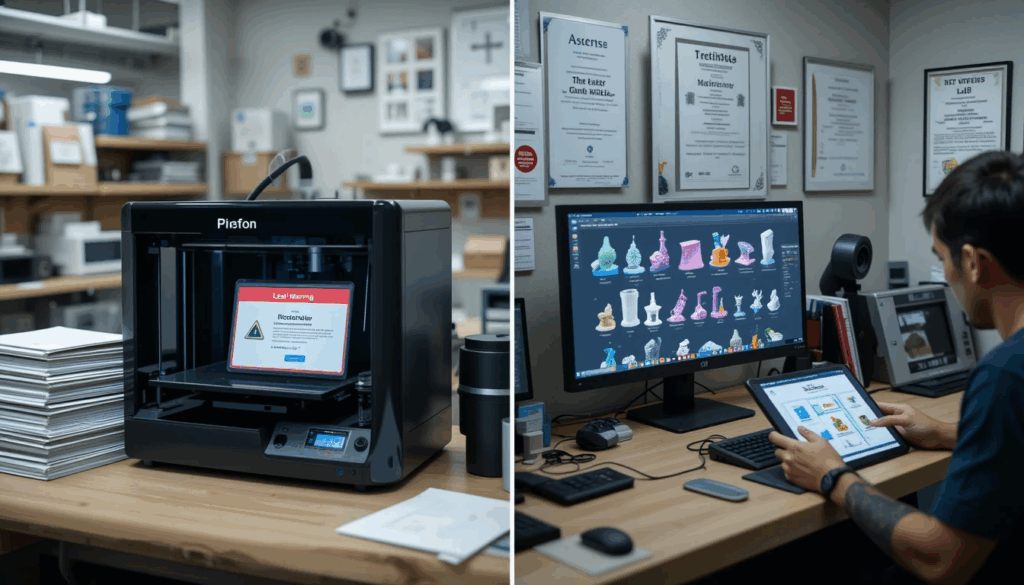3D printing IP infringement is creating a legal nightmare for small manufacturers in 2025. As shared digital copyrights for 3D models proliferate across platforms like Thingiverse and Printables, businesses face costly legal battles over unintentional patent violations that can threaten their very existence. A custom robotics startup nearly collapsed after a $300,000 lawsuit revealed their drone arm design inadvertently infringed on a patented mechanism buried in a shared model file they downloaded. For small manufacturers using 3D printing, what begins as an innocent download can end in financial ruin.
Why 3D Printing Creates Unique IP Risks
-
Digital Inheritance Problem: Downloaded files may contain hidden patented elements
-
Global Jurisdiction Issues: A model legal in one country may violate patents in another
-
Traceability: Every printed object contains metadata that can prove infringement
-
Ignorance Defense Failure: Courts are rejecting “I didn’t know” arguments
The average IP infringement case costs $350,000 to defend—enough to bankrupt most small fabrication shops.
3 Protection Strategies for 3D Printing Businesses
1. Implement a Digital IP Audit System
-
Use automated scanning tools like IPVerify3D ($149/month) to check models against patent databases
-
Establish clear documentation trails for all downloaded files
-
Create an “approved model” repository for your team
2. Leverage IP Insurance and Legal Services
-
Specialized IP insurance: $5,000-$15,000 annually covers legal defense costs
-
Flat-fee legal reviews: $500 per model for attorney clearance
-
Industry cooperatives: Join the 3D Printing Defense Collective for group protection
3. Develop Original Design Protocols
| Risky Practice | Safe Alternative |
|---|---|
| Downloading unknown files | Create original designs from scratch |
| Modifying existing files | Use open-source certified models only |
| Sharing tweaked designs | Implement internal design review process |
Case Study: Jewelry Designer’s Close Call
When a boutique received a cease-and-desist over 3D-printed ring designs:
1️⃣ Removed 142 potentially infringing models from their catalog
2️⃣ Invested in $8,000/year IP insurance
3️⃣ Hired a design student to create original pieces
Result: Avoided lawsuit while developing unique product line
Critical 2025 Considerations
-
EU’s Digital Copyright Directive: Requires active monitoring of shared files
-
US CASE Act: Creates streamlined $30,000 copyright claims
-
Platform Liability: Marketplaces like Etsy now share infringement responsibility
Hidden Opportunities
-
IP Licensing: Generate revenue by licensing your original designs
-
Certified Models: Charge premium for “IP-cleared” printing services
-
Design Originality: Unique products command 40% higher margins
Bottom Line
3D printing IP infringement risks won’t disappear, but proactive businesses can protect themselves through auditing, insurance, and original design development. The companies that thrive will be those who treat IP compliance as a competitive advantage rather than a burden.



